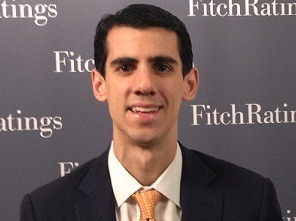Winds of Change for M-F REITs
By Anna Spiewak, News Editor: Tenant demand for multi-family units has been insatiable since the bursting of the single-family residential bubble, despite persistent macroeconomic headwinds. But according to a new report released last week by Fitch Ratings, what goes up does eventually have to come down—not only in physics but, apparently, in commercial real estate, as well.
By Anna Spiewak, News Editor
Multi-family REITs are the investment haven of today. Tenant demand for multi-family units has been insatiable since the bursting of the single-family residential bubble, despite persistent macroeconomic headwinds. But according to a new report released last week by Fitch Ratings, what goes up does eventually have to come down—not only in physics but, apparently, in commercial real estate, as well.
“When you speak to anyone in commercial real estate right now, they are just unbelievably excited about multi-family (investments), from the financing side to the property fundamentals side, and they’re really euphoric,” said Britton Costa, associate director at Fitch Ratings. “There are some very significant growth expectations being dug into the current acquisition environment, and we think that if things are less positive than today, people’s minds can change very quickly, and people are very affected when something is (at its) best and then suddenly becomes worse.”
The multi-family sector has flourished in the past few years due to a slowdown in supply and superior access to capital, leading to material improvements in both operating and credit profiles of multi-family REITs, according to the Fitch report. Furthermore, the global rating agency estimates that 80 percent of the 2009-11 growth in multi-family demand was the result of declining homeownership.
However, owning a home remains the American dream—it was just delayed—and single-family home sales are now also rising. In fact, they improved by 9.6 percent this year over last year, as the large pent-up demand resulting from the slowdown in household formation between 2008 and 2011 started to release thanks to steady job creation, according to a spokesperson for the National Association of Realtors. Fitch’s homebuilding analysts believe there will be a slow but positive growth in home sales and prices nationally, with home sales growth for this year predicted to be almost 20 percent and medium price growth, 3.2 percent, according to Costa.
That and a lack of affordability in rents are contributors to the likely coming slowdown in apartment demand and consequently in performance of multi-family REITs, as will the uncertain future of the government-sponsored enterprises. Fannie Mae and Freddie Mac have increased their exposure to the multi-family sector by $76 billion in the past five years to offset a similar decline in mortgage availability from traditional lenders. But there is limited political will to keep the GSEs under continuous guardianship.
The multi-family market should continue to perform well in 2013, with the slowdown predicted for 2014 at the earliest, according to Fitch. (The vacancy rate is expected to shrink from 4.2 percent in 2012 to 3.9 percent in 2014, according to fourth-quarter commercial forecast data from the NAR.)
“The key to this report is that we think there are an increasing number of risks that are not necessarily negative on the sector or the environment, but we think that investors should be conscious of this when looking at the sector, because it’s tough for things to get much better than today,” Costa concluded.








You must be logged in to post a comment.